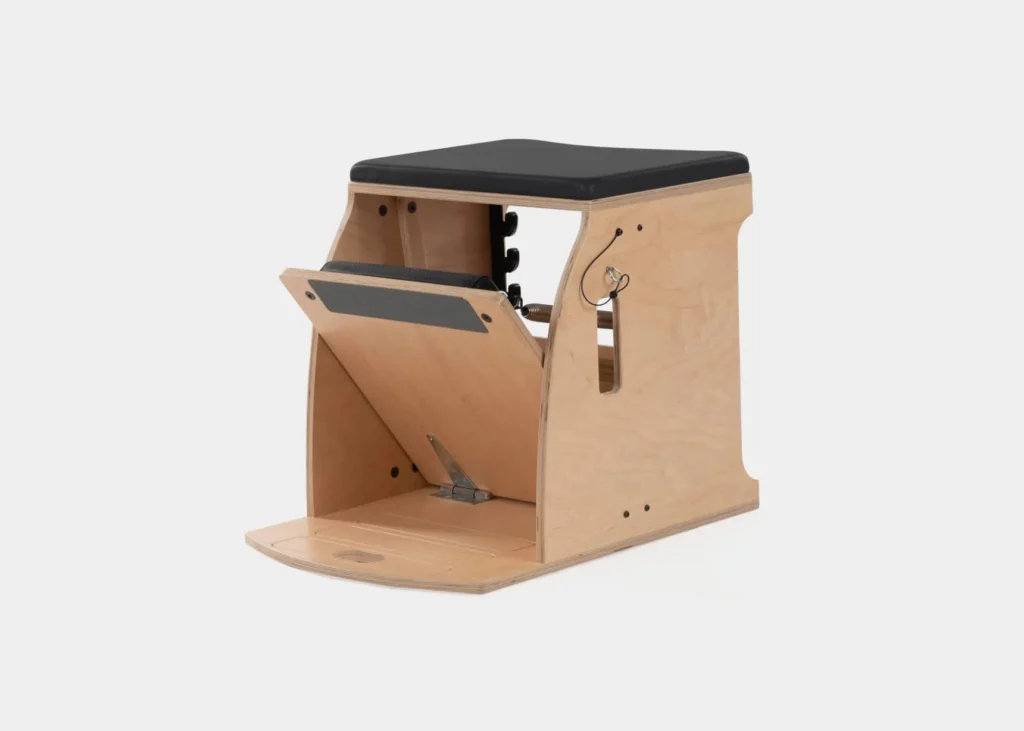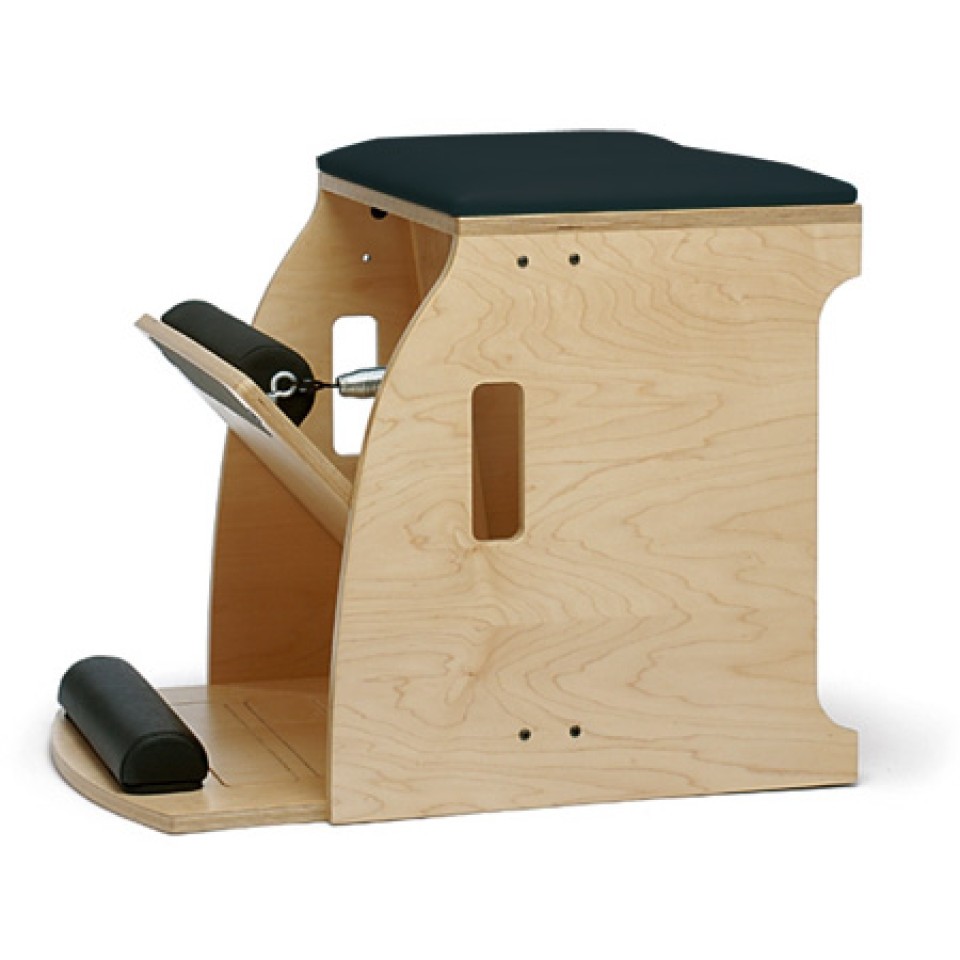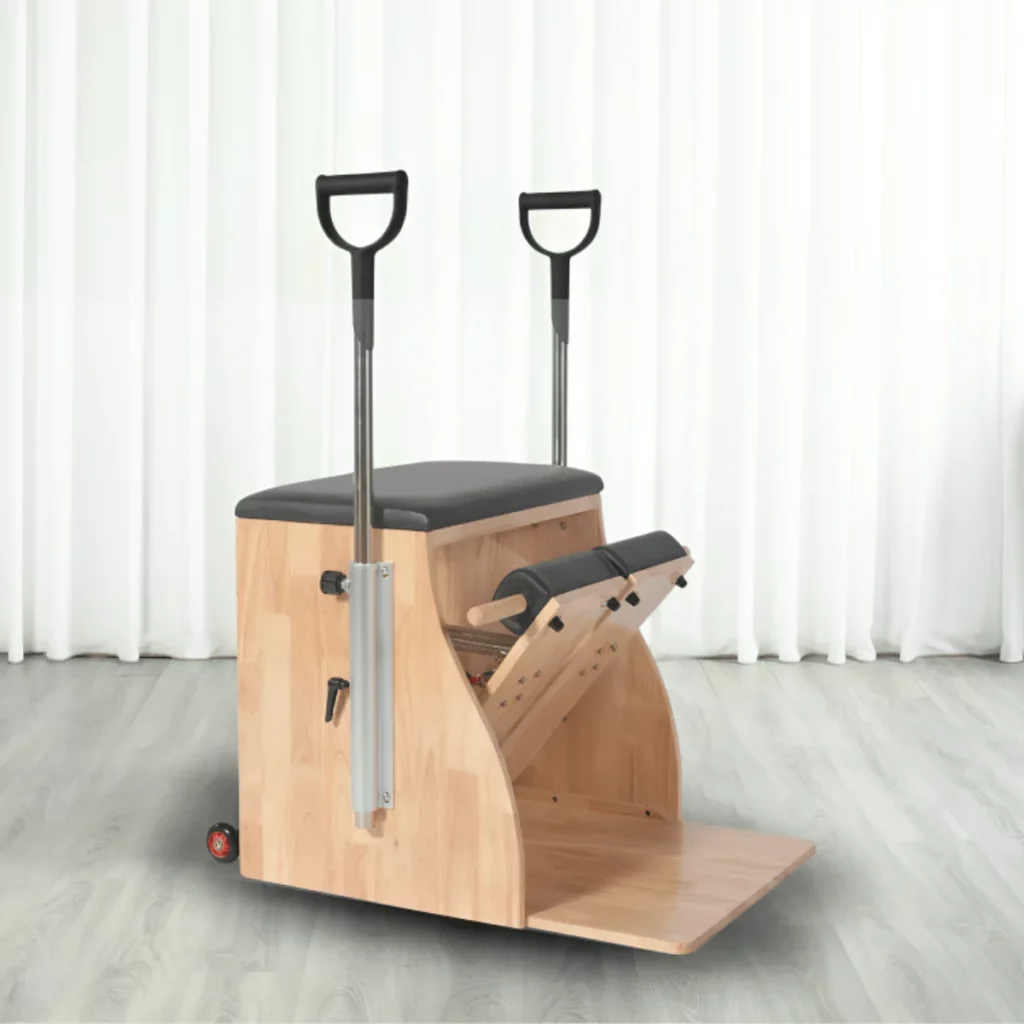The Wunda Chair, a versatile piece of Pilates equipment, is renowned for its ability to enhance core strength and functional fitness. Developed by Joseph Pilates, the Wunda Chair is designed to challenge the body in various ways, promoting stability, strength, and flexibility. This article delves into the mechanics of the Wunda Chair, its benefits for core strength, and how it contributes to functional fitness, making it an essential tool for both beginners and seasoned fitness enthusiasts.
Understanding the Wunda Chair
The Wunda Chair is a compact, multifunctional piece of equipment that features a padded seat, springs, and a footbar. Its design allows for a wide range of exercises that target different muscle groups, particularly the core. The chair’s unique structure provides resistance through springs, enabling users to perform both strength-building and flexibility-enhancing movements.
One of the key features of the Wunda Chair is its ability to accommodate various fitness levels. Whether you are a novice or an advanced practitioner, the chair can be adjusted to suit your needs. The resistance can be modified by changing the spring settings, allowing for a tailored workout experience.
The Historical Context of the Wunda Chair
Joseph Pilates created the Wunda Chair in the early 20th century as part of his broader vision for physical fitness. He believed in the importance of a strong core as the foundation for overall health and well-being. The chair was designed to facilitate exercises that would strengthen the core while also improving balance and coordination.
Over the years, the Wunda Chair has evolved, but its fundamental principles remain rooted in Pilates’ original philosophy. Today, it is widely used in studios and rehabilitation centres, showcasing its versatility and effectiveness in enhancing physical fitness.
The Role of Core Strength in Functional Fitness
Core strength is crucial for overall physical health, as it supports the spine and pelvis, enabling efficient movement and stability. A strong core enhances posture, reduces the risk of injury, and improves performance in various physical activities. Functional fitness, on the other hand, refers to exercises that mimic everyday movements, helping individuals perform daily tasks with greater ease and efficiency.
By integrating core strength training with functional fitness, individuals can achieve a well-rounded fitness regimen that not only builds strength but also enhances their ability to perform daily activities. The Wunda Chair plays a pivotal role in this integration, offering exercises that target the core while promoting functional movement patterns.
Benefits of Core Strength
- Improved Posture: A strong core helps maintain proper alignment of the spine, reducing the likelihood of back pain and discomfort.
- Enhanced Balance: Core strength is essential for stability, which is particularly important for athletes and those engaging in physical activities.
- Injury Prevention: Strengthening the core can help protect the back and other joints from injury during physical exertion.
- Increased Athletic Performance: A strong core contributes to better performance in sports and physical activities by providing a solid foundation for movement.
How the Wunda Chair Enhances Core Strength
The Wunda Chair offers a variety of exercises specifically designed to target the core muscles, including the abdominals, obliques, and lower back. The resistance provided by the springs challenges these muscles, promoting strength and endurance. Here are some key exercises that illustrate how the Wunda Chair enhances core strength:
1. The Short Box Series
One of the most effective ways to engage the core on the Wunda Chair is through the Short Box Series. This series includes exercises such as the Round Back, Flat Back, and Side Bends, all of which focus on the abdominal muscles while also engaging the back and pelvic stabilisers.
In the Round Back exercise, the user sits on the box, pulls the straps, and rounds the spine while maintaining control. This movement not only strengthens the core but also improves spinal flexibility. The Flat Back variation requires the user to maintain a neutral spine while pulling the straps, further challenging the core stability.

2. The Footwork Series
The Footwork Series on the Wunda Chair is another excellent way to build core strength. This series involves pushing against the footbar while maintaining a stable core. Exercises such as the Foot Press and the Calf Raise require the user to engage their core to maintain balance and control throughout the movement.
By focusing on the core during these exercises, users can develop strength and stability that translates to improved performance in other physical activities. The resistance from the springs adds an extra challenge, making the workout more effective.
3. The Push-Up Series
The Push-Up Series on the Wunda Chair is a dynamic way to engage the core while also working the upper body. By performing push-ups with the feet on the chair and hands on the floor, users must engage their core to maintain a straight line from head to heels.
This exercise not only strengthens the chest and arms but also challenges the core, promoting overall stability and strength. The adjustable springs allow users to modify the resistance, making it suitable for various fitness levels.
Integrating the Wunda Chair into a Functional Fitness Routine
To maximise the benefits of the Wunda Chair, it is essential to integrate it into a broader functional fitness routine. This involves combining exercises that target various muscle groups while emphasising core strength. Here are some tips for incorporating the Wunda Chair into a functional fitness regimen:
1. Combine with Bodyweight Exercises
Incorporating bodyweight exercises such as squats, lunges, and planks can complement the workouts on the Wunda Chair. These exercises engage the core and promote functional movement patterns, enhancing overall strength and stability.
For example, performing a squat followed by a Wunda Chair exercise like the Footwork Series can create a seamless transition between strength training and core engagement, ensuring a comprehensive workout.
2. Focus on Mobility and Flexibility
In addition to strength training, incorporating mobility and flexibility exercises is crucial for functional fitness. The Wunda Chair can be used for stretches and mobility work, helping to improve range of motion and prevent injury.
Exercises such as the Spine Stretch and the Seated Forward Bend can be performed on the chair, promoting flexibility while also engaging the core. This holistic approach to fitness ensures that users develop well-rounded physical capabilities.
3. Set Specific Goals
Setting specific fitness goals can help guide your use of the Wunda Chair. Whether your aim is to improve core strength, enhance athletic performance, or simply maintain overall fitness, having clear objectives can motivate and direct your training efforts.
Tracking progress through regular assessments can also provide valuable insights into your fitness journey, allowing you to adjust your routine as needed to continue challenging yourself.

Conclusion
The Wunda Chair is a powerful tool for enhancing core strength and functional fitness. Its unique design allows for a variety of exercises that target the core while promoting overall stability and strength. By integrating the Wunda Chair into a comprehensive fitness routine, individuals can achieve their fitness goals while improving their ability to perform everyday activities with ease.
Whether you are a beginner or an experienced practitioner, the Wunda Chair offers a versatile and effective way to enhance your fitness journey. Embracing its potential can lead to significant improvements in core strength, functional fitness, and overall well-being.
See Also: Wunda Chair price guide: what to expect and where to get value.
